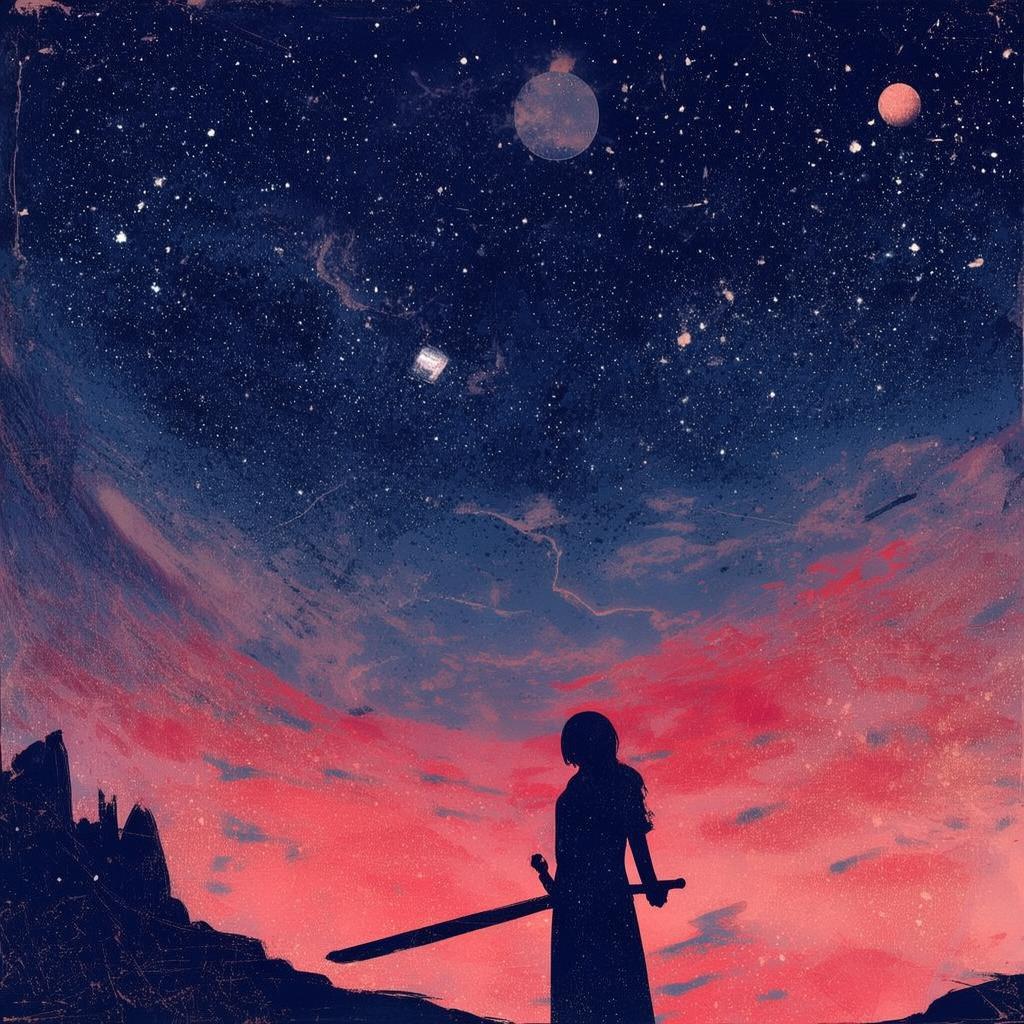Whispers of the Ink
In the heart of a bustling city, nestled within the quiet confines of a quaint apartment, there lay a canvas unlike any other. It was a canvas that held no paint, no color, no texture—it was a canvas of dreams. This was the realm of the Unseen Canvas, a place where the dreams of cartoonists came to life, a parallel reality that could only be seen by those who wielded the power of their imagination.
Amara, a young and talented cartoonist, discovered the Unseen Canvas in her late teens. Her dreams had always been vivid and wild, but this was different. Here, her characters and worlds became tangible, alive, and with a will of their own. It was a place of wonder and magic, a sanctuary where her creativity knew no bounds.
One evening, as Amara sat before her canvas, her mind wandered to a dark corner of her imagination. She had been working on a story about a character named Elara, a warrior princess who fought against a malevolent force that threatened her kingdom. The story was dark, filled with despair and loss, and it was in this darkness that Amara found herself.
As her hand moved over the canvas, the dream began to take shape. Elara stood before her, her armor clinking with each step, her eyes filled with a fire that matched the darkness that surrounded her. The kingdom was in ruins, and Elara was alone, her kingdom's fate hanging in the balance.
Amara was captivated by the story she had created, but she couldn't shake the feeling that something was off. The dream was too real, too intense, and it seemed to be pulling her deeper into its dark embrace. She found herself spending more and more time in the dream, her reality becoming more and more blurred.
Days turned into weeks, and Amara's life began to unravel. She stopped eating, her once vibrant eyes now hollow and lifeless. Her friends and family were worried, but Amara was unreachable, ensnared by the dream that consumed her every thought.
One night, as Amara lay in bed, her reality and the dream collided. Elara appeared before her, her voice a whisper that echoed in Amara's mind. "You must choose, Amara. Will you let your creation consume you, or will you save your own reality?"
Confused and scared, Amara tried to reach out to Elara, but her hands passed through the warrior princess. She was trapped, a ghost in her own world. Desperate, she pleaded, "Help me, Elara. I don't want to lose everything."
Elara's eyes softened, and she spoke again. "The power of the Unseen Canvas is great, but it is also dangerous. You must confront the darkness within you, or it will consume not just your dream, but your reality as well."
Amara awoke from her dream, her heart pounding in her chest. She realized that Elara was not just a character in her story; she was a manifestation of her own subconscious, a warning from her mind that she was in danger of losing herself to the darkness of her creation.
Determined to save her reality, Amara began to work on a new story, one that would confront the darkness within her. She created a character named Lira, a young artist who discovered the Unseen Canvas and became consumed by her own creation, much like Amara. Lira's journey was a reflection of Amara's own, and as she watched Lira struggle against the darkness, Amara found the strength to do the same.

The story of Lira became a beacon of hope for Amara. She began to see the light in the darkness, the beauty that could be found in even the darkest of places. As she painted, the dreams became less intense, less consuming, and her reality began to return to her.
In the end, Amara learned that the Unseen Canvas was a powerful tool, but it was not without its risks. She had to learn to control her power, to balance her creativity with her sense of self-preservation. And so, she continued to create, her dreams and her reality coexisting in a delicate balance.
The story of Amara and Lira spread through the cartoonist community, a testament to the power of art and the strength of the human spirit. Amara's journey became a reminder to all who wielded the power of the Unseen Canvas that their dreams were a gift, but they were also a responsibility. The canvas was a mirror, reflecting both the light and the dark, and it was up to the artist to choose which one to embrace.
✨ Original Statement ✨
All articles published on this website (including but not limited to text, images, videos, and other content) are original or authorized for reposting and are protected by relevant laws. Without the explicit written permission of this website, no individual or organization may copy, modify, repost, or use the content for commercial purposes.
If you need to quote or cooperate, please contact this site for authorization. We reserve the right to pursue legal responsibility for any unauthorized use.
Hereby declared.









